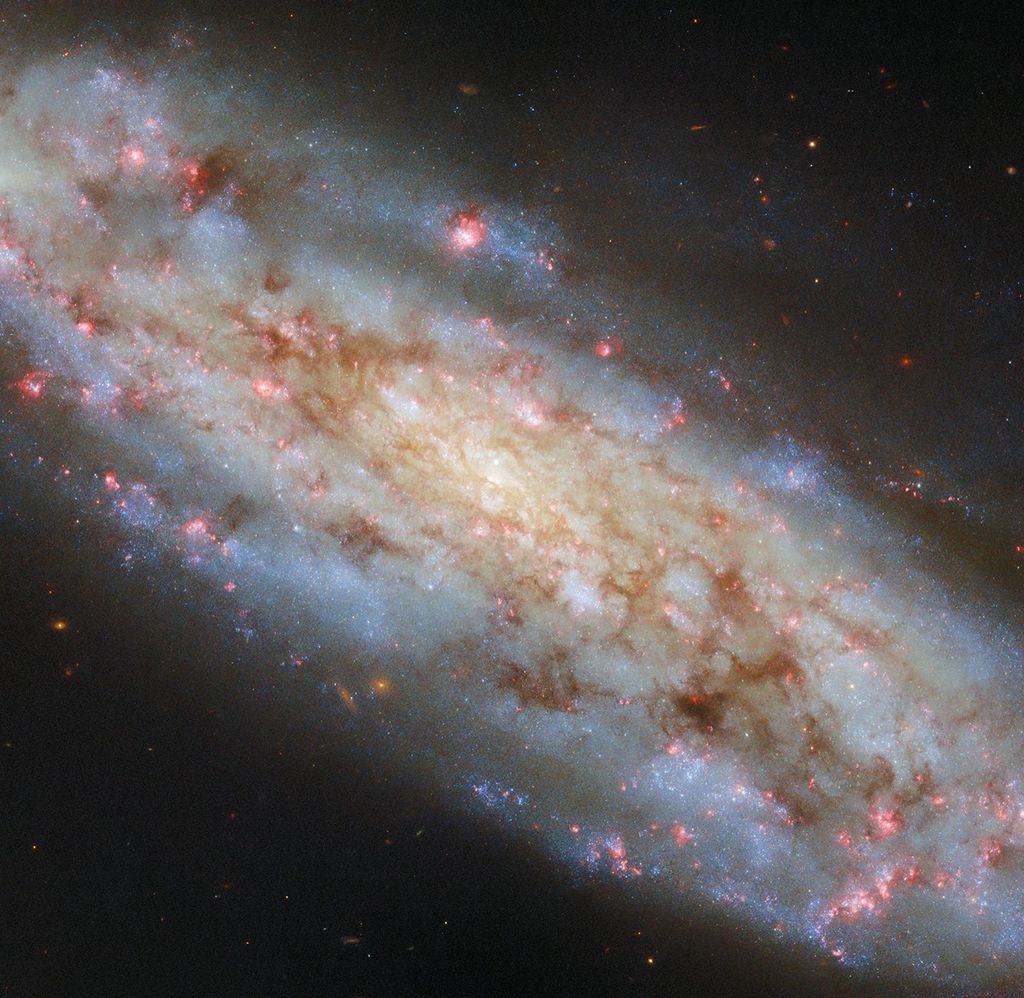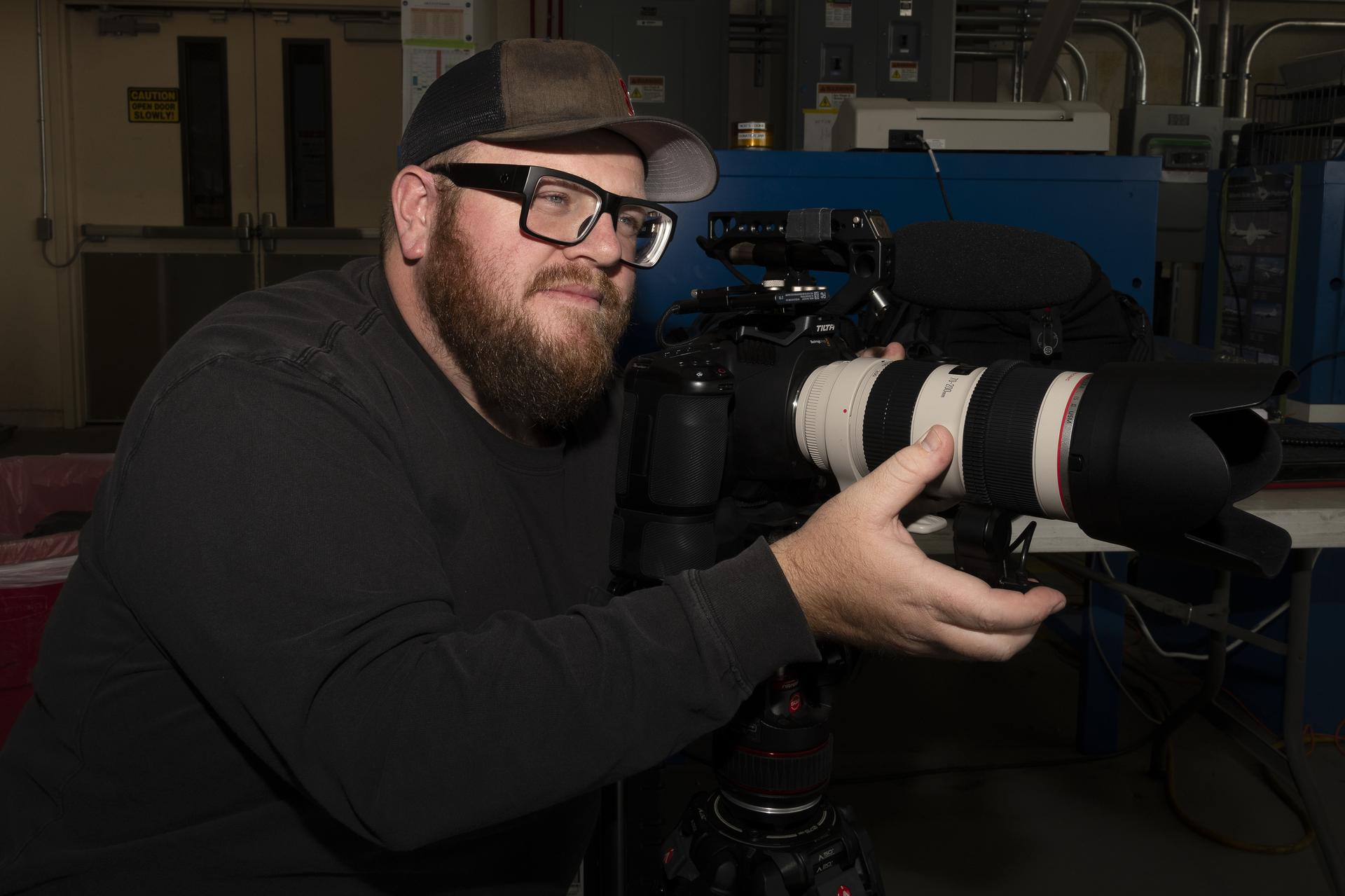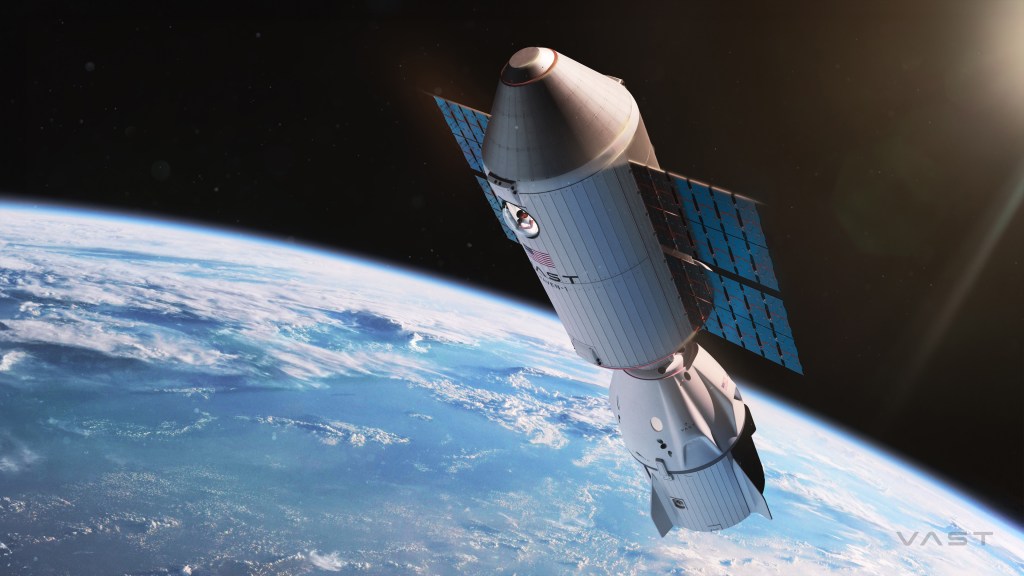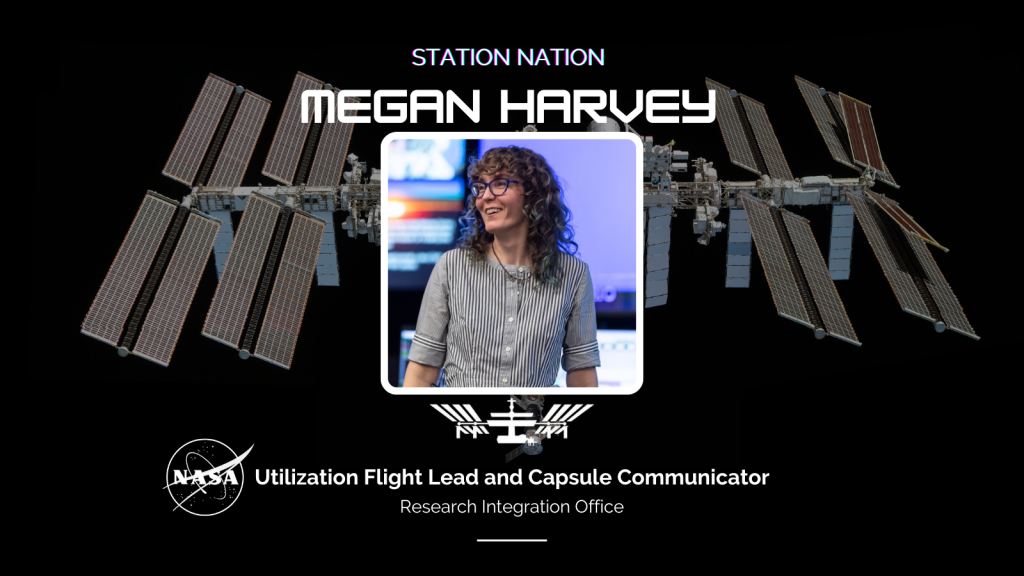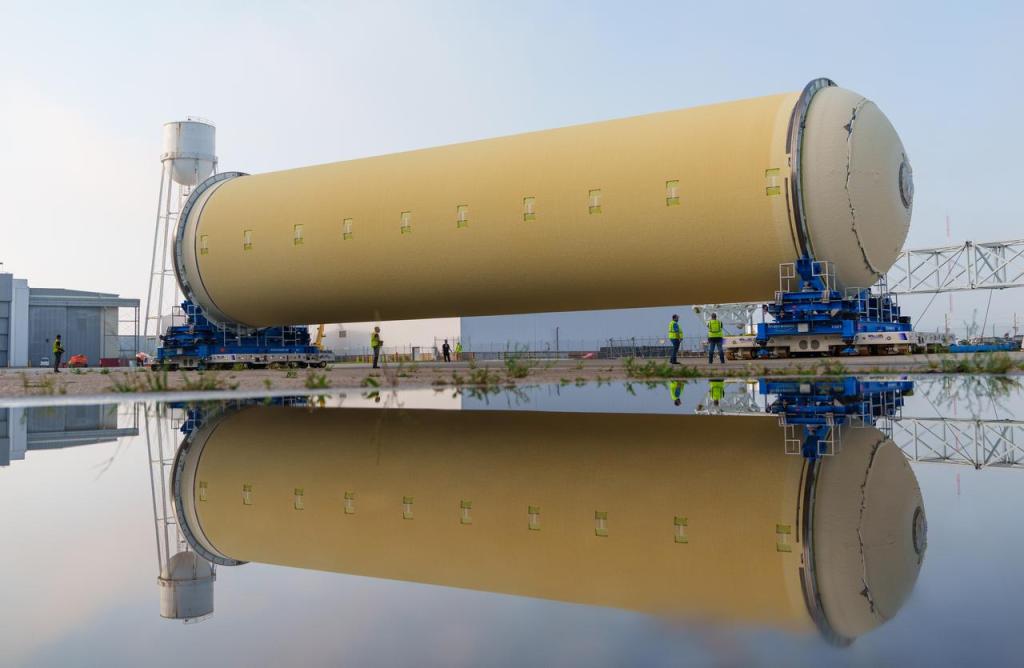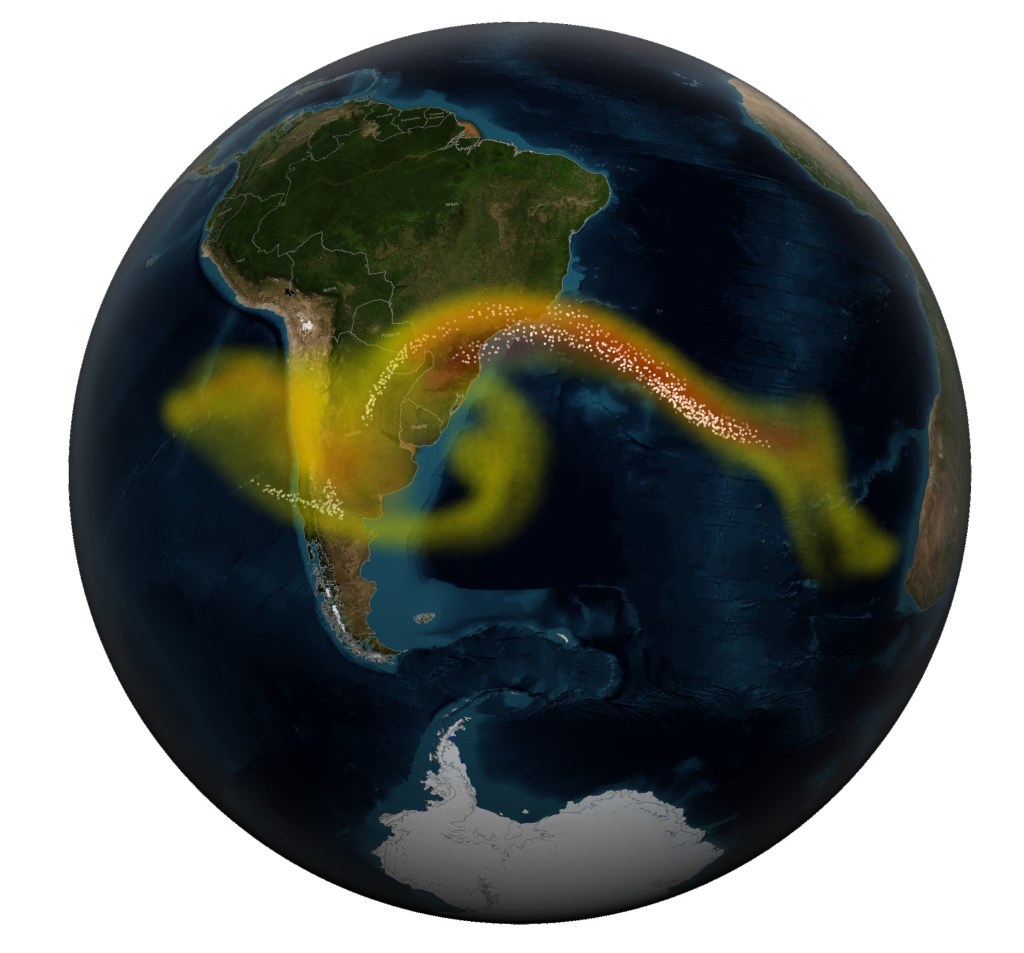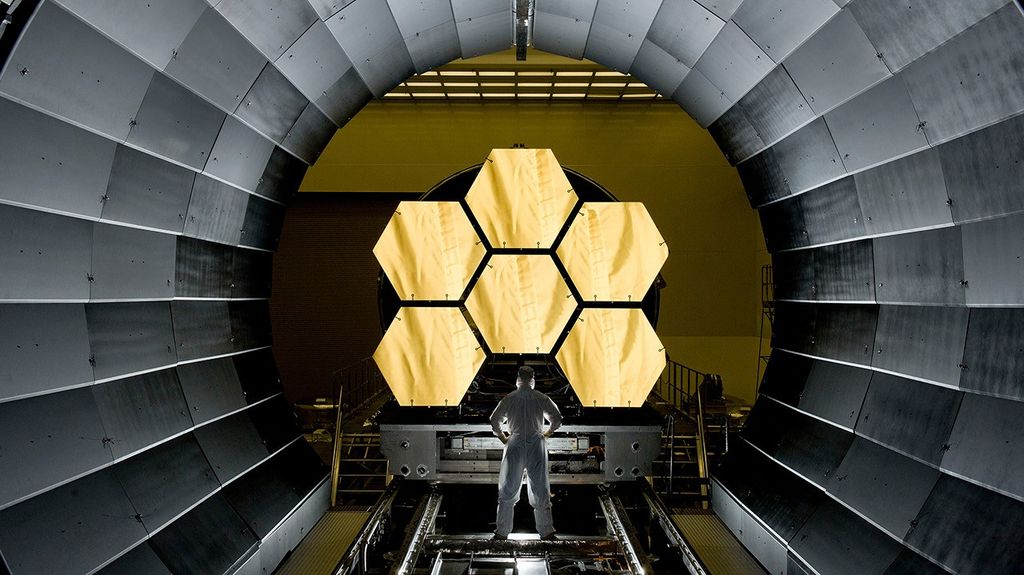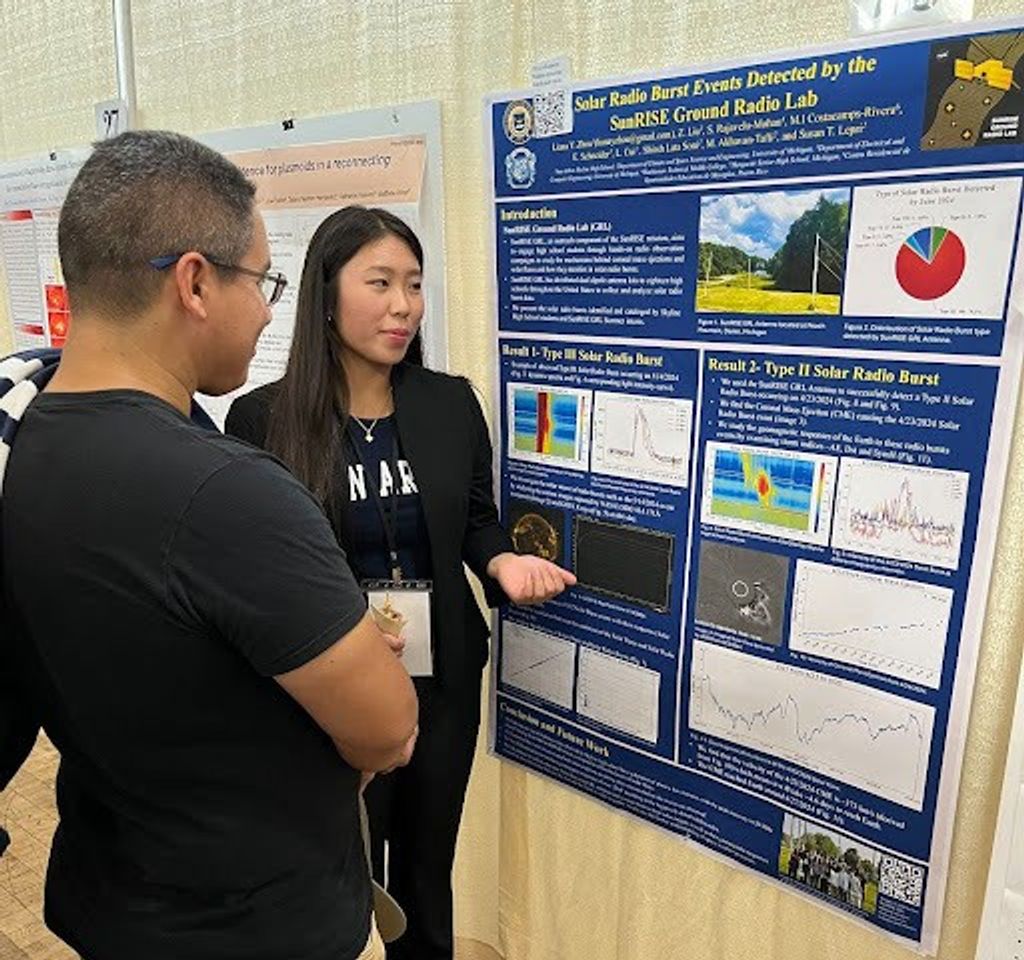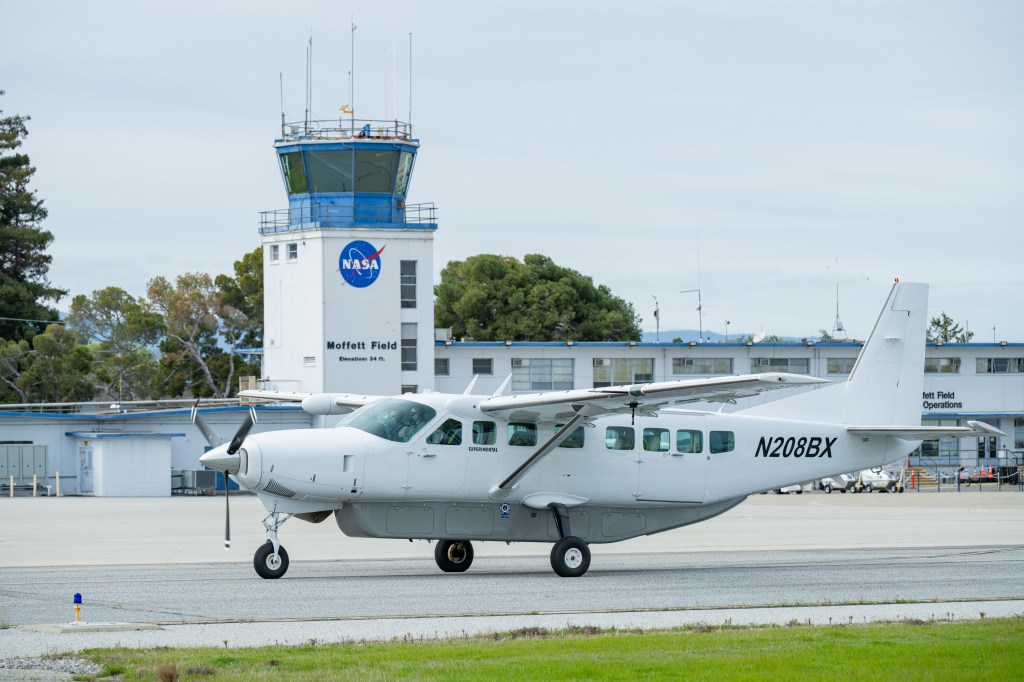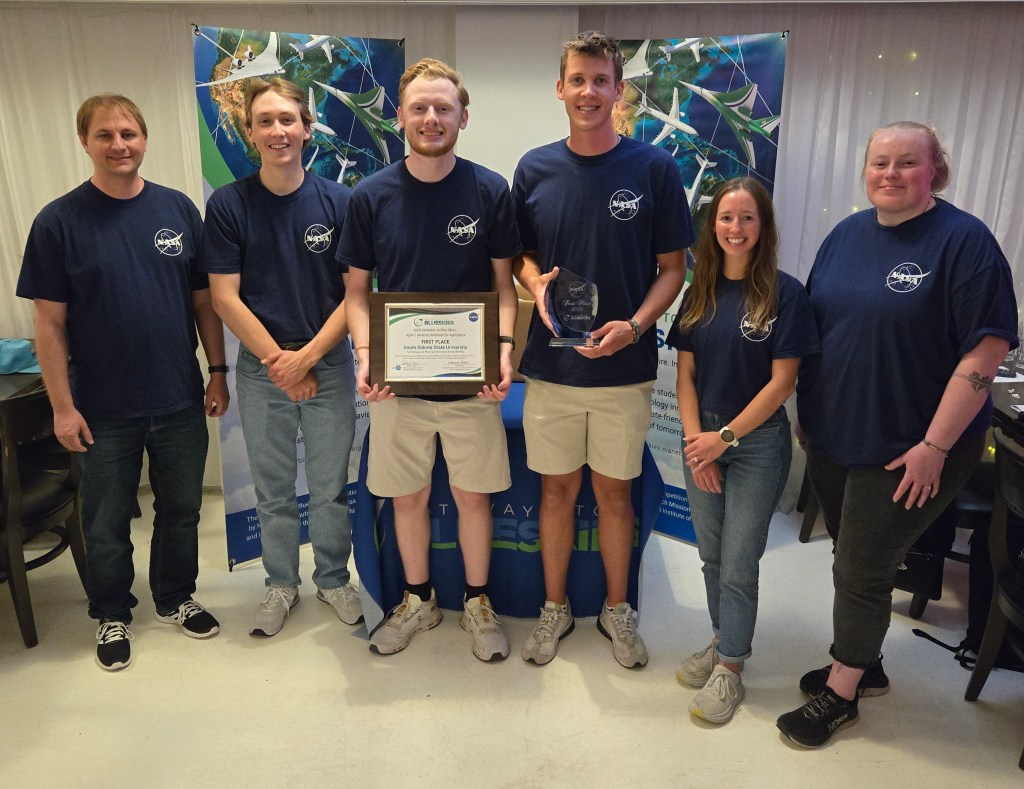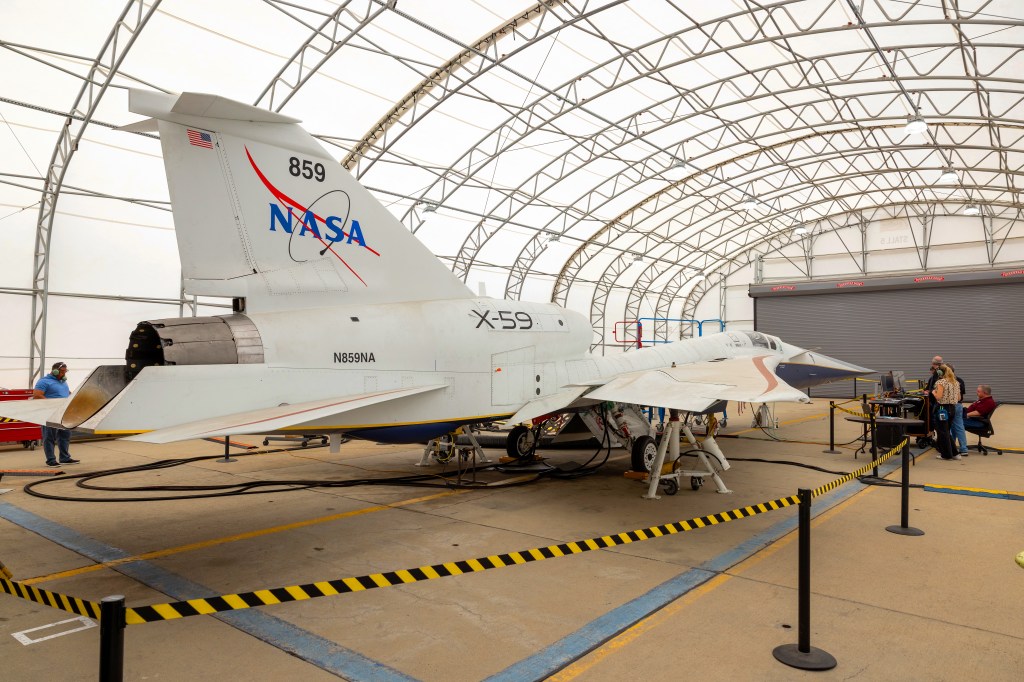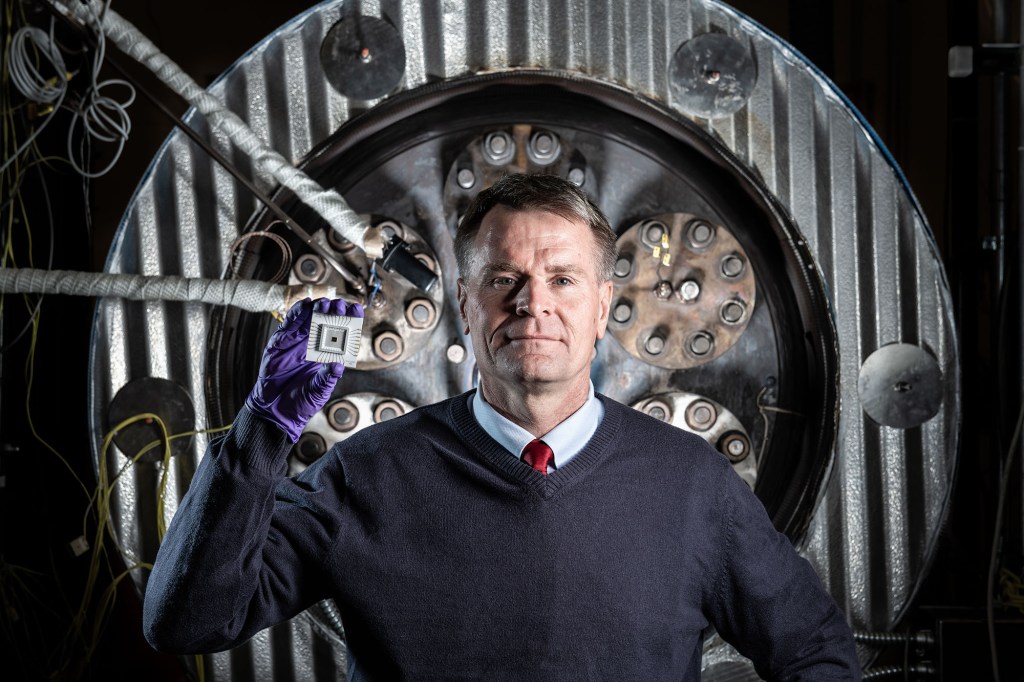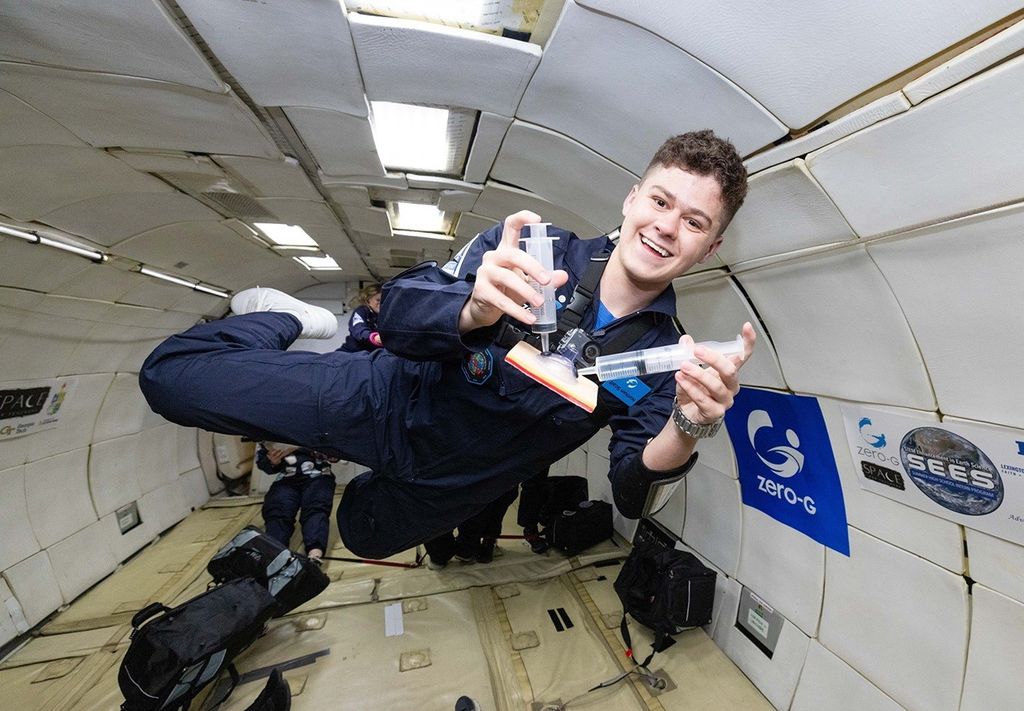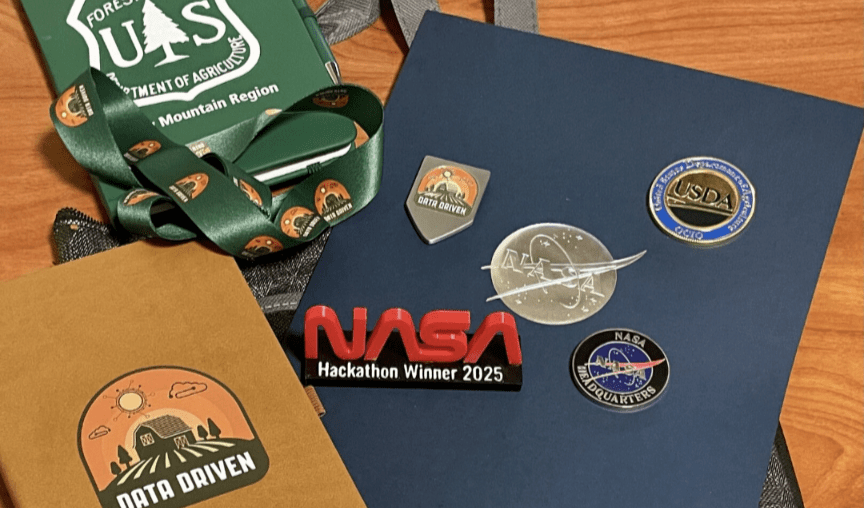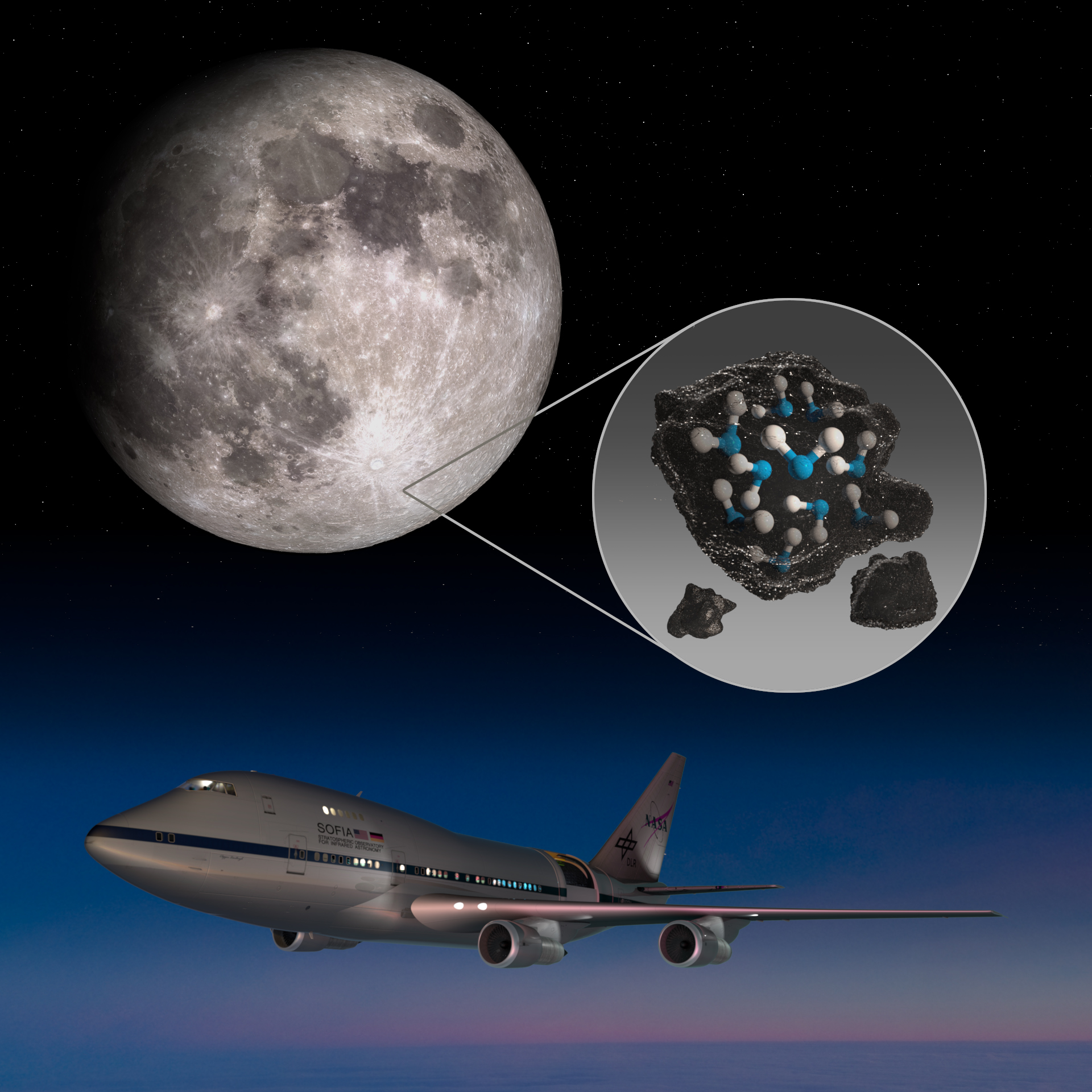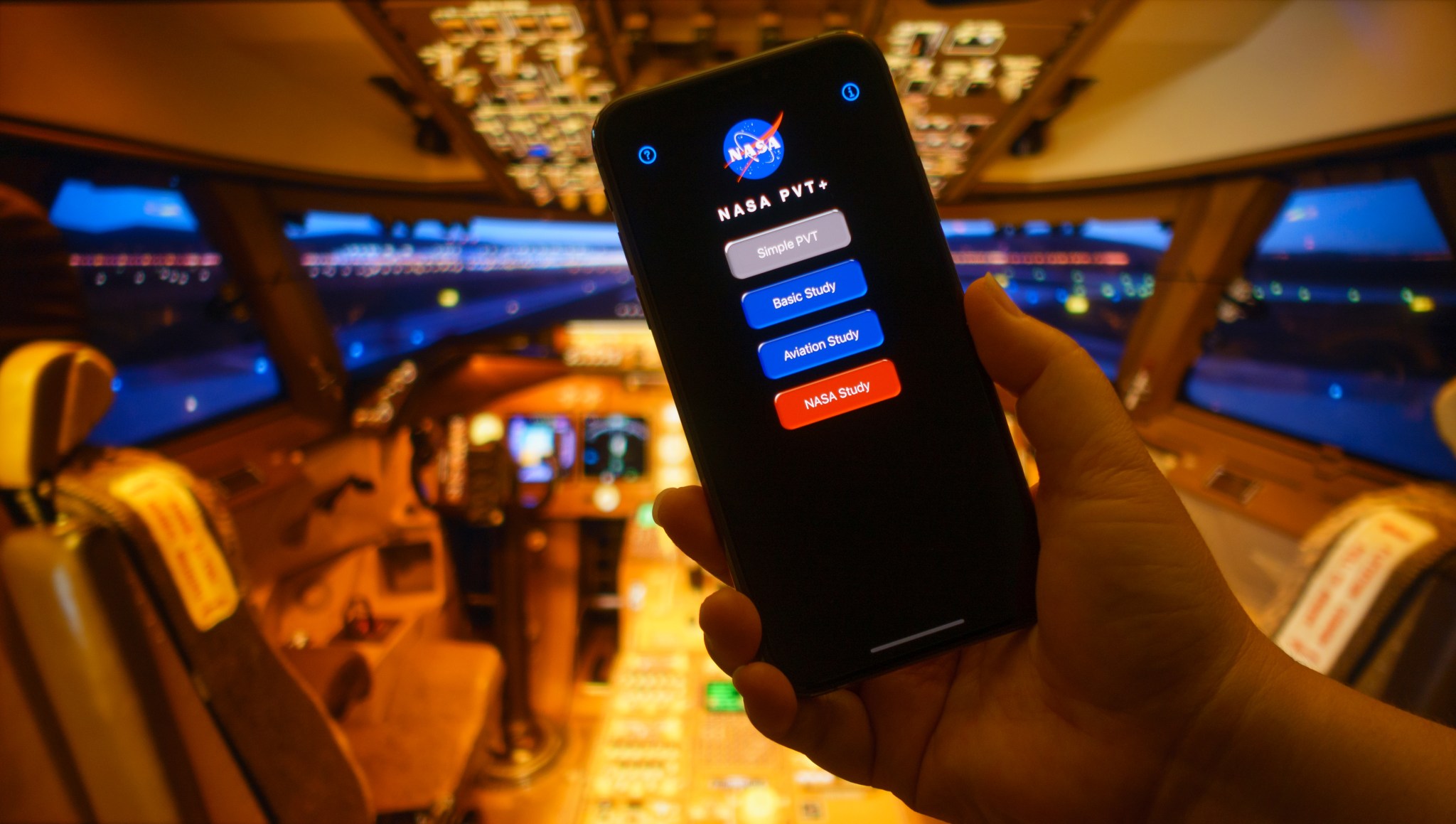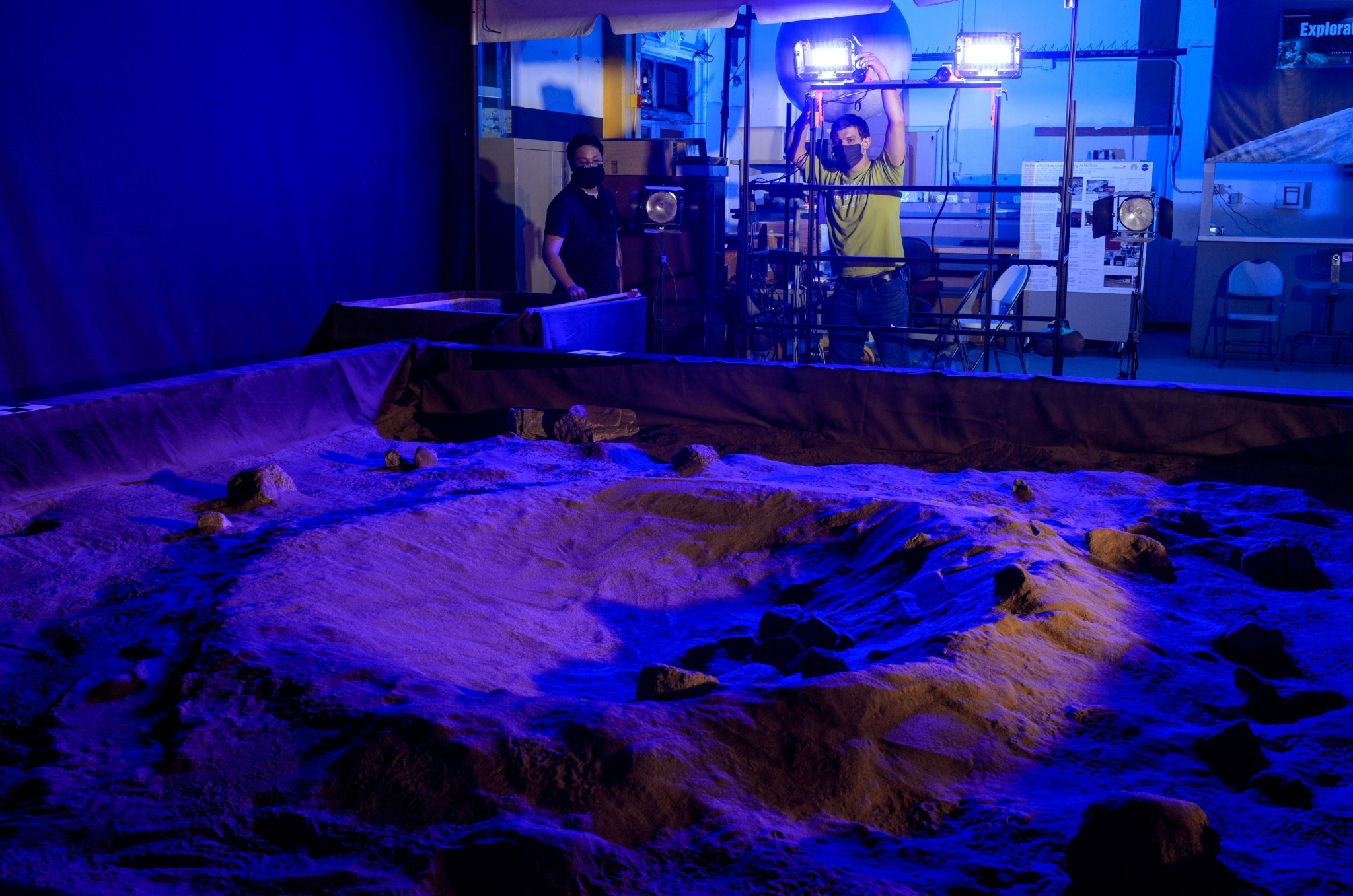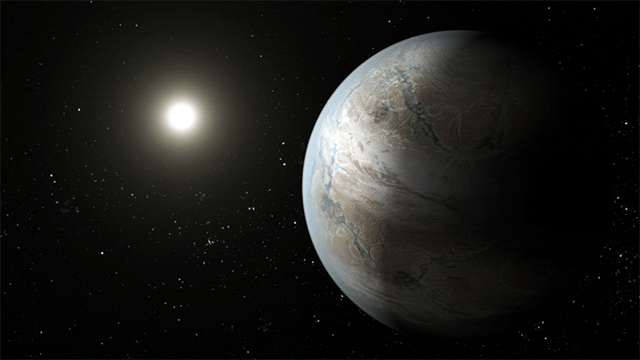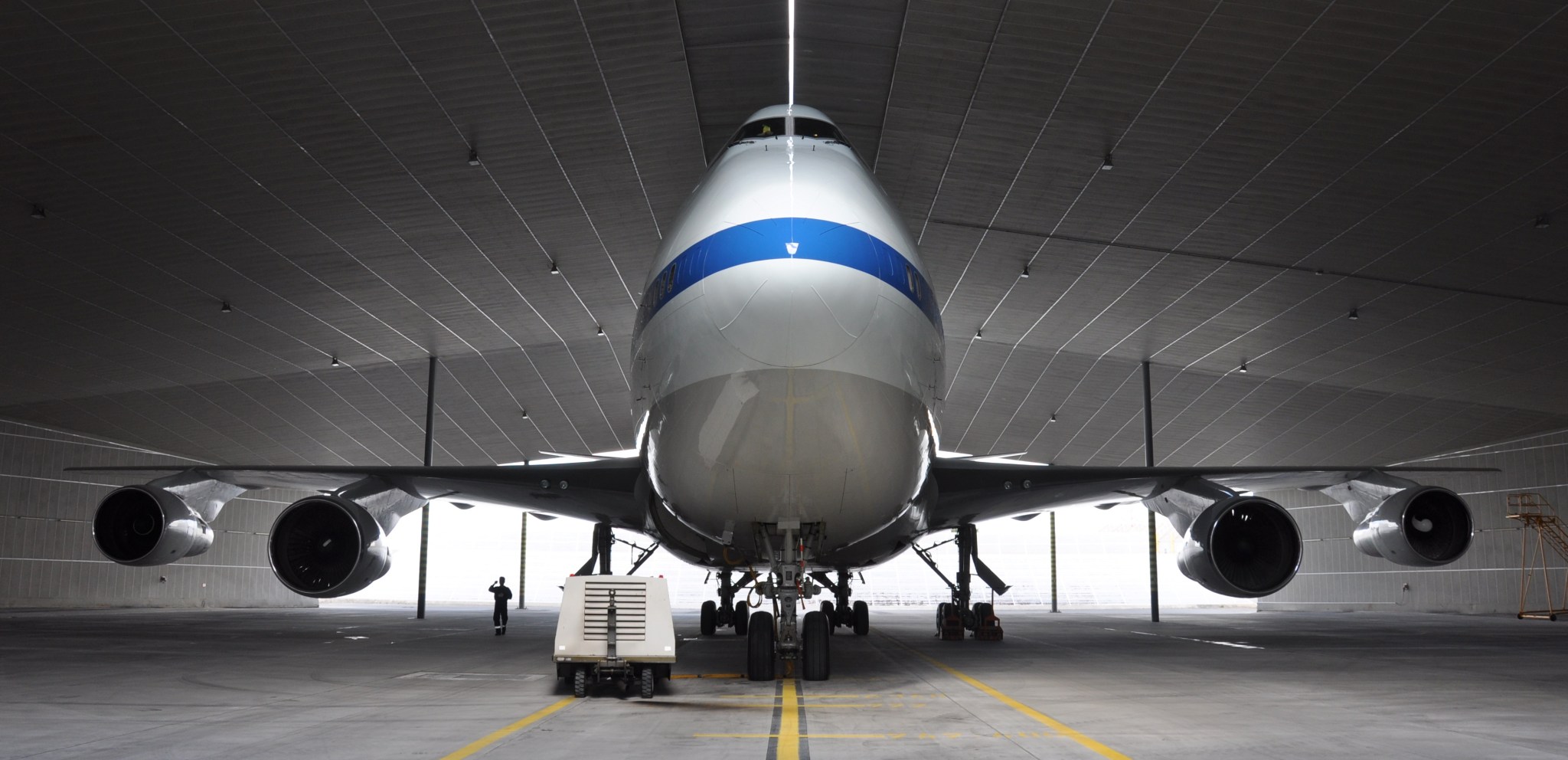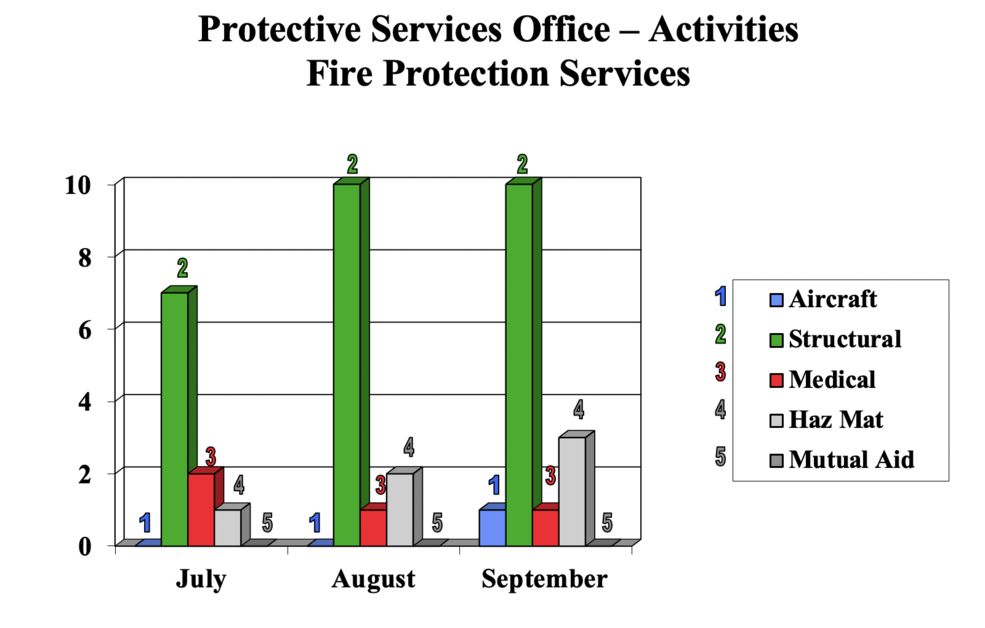October 2020 issue of the Ames newsletter the Astrogram
NASA’s SOFIA Discovers Water on the Sunlit Surface of the Moon
by Alison Hawkes
NASA’s Stratospheric Observatory for Infrared Astronomy, or SOFIA has confirmed, for the first time, water on the sunlit surface of the Moon. This discovery indicates that water may be distributed across the lunar surface, and not limited to cold, shadowed places.
SOFIA has detected water molecules (H2O) in Clavius Crater, one of the largest craters visible from Earth, located in the Moon’s southern hemisphere. Previous observations of the Moon’s surface detected some form of hydrogen, but were unable to distinguish between water and its close chemical relative, hydroxyl (OH). Data from this location reveal water in concentrations of 100 to 412 parts per million – roughly equivalent to a 12-ounce bottle of water – trapped in a cubic meter of soil spread across the lunar surface. The results are published in the latest issue of Nature Astronomy.
“We had indications that H2O – the familiar water we know – might be present on the sunlit side of the Moon,” said Paul Hertz, director of the Astrophysics Division in the Science Mission Directorate at NASA Headquarters in Washington. “Now we know it is there. This discovery challenges our understanding of the lunar surface and raises intriguing questions about resources relevant for deep space exploration.”
As a comparison, the Sahara desert has 100 times the amount of water than what SOFIA detected in the lunar soil. Despite the small amounts, the discovery raises new questions about how water is created and how it persists on the harsh, airless lunar surface.
Water is a precious resource in deep space and a key ingredient of life as we know it. Whether the water SOFIA found is easily accessible for use as a resource remains to be determined. Under NASA’s Artemis program, the agency is eager to learn all it can about the presence of water on the Moon in advance of sending the first woman and next man to the lunar surface in 2024 and establishing a sustainable human presence there by the end of the decade.
SOFIA’s results build on years of previous research examining the presence of water on the Moon. When the Apollo astronauts first returned from the Moon in 1969, it was thought to be completely dry. Orbital and impactor missions over the past 20 years, such as NASA’s Lunar Crater Observation and Sensing Satellite, confirmed ice in permanently shadowed craters around the Moon’s poles. Meanwhile, several spacecraft – including the Cassini mission and Deep Impact comet mission, as well as the Indian Space Research Organization’s Chandrayaan-1 mission – and NASA’s ground-based Infrared Telescope Facility, looked broadly across the lunar surface and found evidence of hydration in sunnier regions. Yet those missions were unable to definitively distinguish the form in which it was present – either H2O or OH.
“Prior to the SOFIA observations, we knew there was some kind of hydration,” said Casey Honniball, the lead author who published the results from her graduate thesis work at the University of Hawaii at Mānoa in Honolulu. “But we didn’t know how much, if any, was actually water molecules – like we drink every day – or something more like drain cleaner.”
SOFIA offered a new means of looking at the Moon. Flying at altitudes of up to 45,000 feet, this modified Boeing 747SP jetliner with a 106-inch diameter telescope reaches above 99% of the water vapor in Earth’s atmosphere to get a clearer view of the infrared universe. Using its Faint Object infraRed CAmera for the SOFIA Telescope (FORCAST), SOFIA was able to pick up the specific wavelength unique to water molecules, at 6.1 microns, and discovered a relatively surprising concentration in sunny Clavius Crater.
“Without a thick atmosphere, water on the sunlit lunar surface should just be lost to space,” said Honniball, who is now a postdoctoral fellow at NASA’s Goddard Space Flight Center in Greenbelt, Maryland. “Yet somehow we’re seeing it. Something is generating the water, and something must be trapping it there.”
Several forces could be at play in the delivery or creation of this water. Micrometeorites raining down on the lunar surface, carrying small amounts of water, could deposit the water on the lunar surface upon impact. Another possibility is there could be a two-step process whereby the Sun’s solar wind delivers hydrogen to the lunar surface and causes a chemical reaction with oxygen-bearing minerals in the soil to create hydroxyl. Meanwhile, radiation from the bombardment of micrometeorites could be transforming that hydroxyl into water.
How the water then gets stored – making it possible to accumulate – also raises some intriguing questions. The water could be trapped into tiny beadlike structures in the soil that form out of the high heat created by micrometeorite impacts. Another possibility is that the water could be hidden between grains of lunar soil and sheltered from the sunlight – potentially making it a bit more accessible than water trapped in beadlike structures.
For a mission designed to look at distant, dim objects such as black holes, star clusters, and galaxies, SOFIA’s spotlight on Earth’s nearest and brightest neighbor was a departure from business as usual. The telescope operators typically use a guide camera to track stars, keeping the telescope locked steadily on its observing target. But the Moon is so close and bright that it fills the guide camera’s entire field of view. With no stars visible, it was unclear if the telescope could reliably track the Moon. To determine this, in August 2018, the operators decided to try a test observation.
“It was, in fact, the first time SOFIA has looked at the Moon, and we weren’t even completely sure if we would get reliable data, but questions about the Moon’s water compelled us to try,” said Naseem Rangwala, SOFIA’s project scientist at NASA Ames. “It’s incredible that this discovery came out of what was essentially a test, and now that we know we can do this, we’re planning more flights to do more observations.”
SOFIA’s follow-up flights will look for water in additional sunlit locations and during different lunar phases to learn more about how the water is produced, stored, and moved across the Moon. The data will add to the work of future Moon missions, such as NASA’s Volatiles Investigating Polar Exploration Rover (VIPER), to create the first water resource maps of the Moon for future human space exploration.
In the same issue of Nature Astronomy, scientists have published a paper using theoretical models and NASA’s Lunar Reconnaissance Orbiter data, pointing out that water could be trapped in small shadows, where temperatures stay below freezing, across more of the Moon than currently expected. The results can be found here.
“Water is a valuable resource, for both scientific purposes and for use by our explorers,” said Jacob Bleacher, chief exploration scientist for NASA’s Human Exploration and Operations Mission Directorate. “If we can use the resources at the Moon, then we can carry less water and more equipment to help enable new scientific discoveries.”
SOFIA is a joint project of NASA and the German Aerospace Center. Ames manages the SOFIA program, science, and mission operations in cooperation with the Universities Space Research Association, headquartered in Columbia, Maryland, and the German SOFIA Institute at the University of Stuttgart. The aircraft is maintained and operated by NASA’s Armstrong Flight Research Center Building 703, in Palmdale, California.
NASA Research App Helps Fight Fatigue in Flight, Space and More
by Abigail Tabor
If you ever get drowsy at your school or office desk, that’s probably not much of a problem. But what if you’re a pilot, a commercial driver or an astronaut? Then fatigue can lead to small mistakes with significant consequences.
Since it’s hard to tell when “tired“ means “too tired,” NASA has released a research app to help scientists study what’s going on in the body when fatigue prevents you from working safely – and which telltale signs could alert you in time.
For the agency, the new tool will be important for studying fatigue in the worlds of aviation and spaceflight. But it’s releasing the app for free on the Apple App Store so that others doing related research can use a standardized tool and method with years of laboratory experience incorporated into its design.
The app features a reaction-time test to gauge alertness and a streamlined process for gathering information scientists need. This lets the app be used by people working in complex, real-world situations to collect valuable research data, which will help researchers come up with reliable tests and solutions in the long term. Though the app has not been used in space, it has been used by NASA for spaceflight simulations. Other users, like commercial airlines, can run their own fatigue studies with the app, helping them comply with regulations from the Federal Aviation Administration.
The app is based on a common test in this area of research, called the psychomotor vigilance task, or PVT, which NASA already uses on the International Space Station to collect data from astronauts. The test measures a person’s reaction time to a visual signal: as soon as numbers begin scrolling on a screen, a participant hits a button. The numbers show their reaction time in milliseconds and, when people start getting sleepy, they respond less quickly. Since the original PVT was designed to collect data in a lab setting and requires cumbersome hardware, NASA researchers needed a portable version they could distribute widely to collect data in the field. Other mobile options exist to measure a simple reaction time, but NASA’s app, called NASA PVT+, is different.
“We designed it to replicate exactly the tools that we use in the laboratory,” said Erin Flynn-Evans, head of the Fatigue Countermeasures Lab at NASA Ames – the group that developed the new app. Since a classic PVT has users respond with their dominant thumb, the new app “forces” you with its design to do the same. And it can record when a tired person resorts to the wrong thumb or another finger. “It sounds simple, but it’s important for the data collected on the app to be trustworthy and consistent with existing studies.”
For Flynn-Evans, it was also essential that the app work on consumer phones and tablets, so it could be used by many people to collect research data in their actual work settings. In addition to administering a research-grade alertness test on a portable device, the new software takes a user through all of the activities that need to be completed for a study on fatigue in an operational setting: questionnaires, rating scales, cognitive tests. Their answers to questions about their recent sleep habits, for instance, can then be correlated to their performance on the alertness task.
“This may seem like a no-brainer, but until now the burden has been on the study participant to remember what tasks to do and when,” said Flynn-Evans. “This led to data loss and people not completing the study, so our app puts all the tools needed into an easy-to-use package. In a recent study using the app, we were able to collect thousands of tests from pilots, where most prior efforts might have obtained only a fraction of that.”
The FAA, several commercial airlines and researchers in occupational health and safety have already requested the app to use in their own studies, so Flynn-Evans expects it to be adopted by many researchers studying different groups from NASA.
“Sleep research is still a young field,” said Flynn-Evans, “and there’s lots of discovery still happening. It’s exciting, and this app will help all of us learn more.”
VIPER Rover Will Get Driving Headlights
As it journeys into some of the darkest and coldest spots in the solar system, NASA’s new water-hunting Moon rover, VIPER, will need some very robust headlights to light the way.
In the extremes of light and dark found on the Moon, shadowed and lit areas are in such high contrast that any contours in the landscape are effectively invisible in the darkness. To navigate this world, VIPER’s rover drivers will rely on a system of rover-mounted lights and cameras to steer clear of boulders, descend steep declines into craters and avoid other potentially mission-fatal dangers. To make sure the first-ever lighting system on a rover will reveal obstacles hiding in the shadows, the VIPER team recently tested prototypes in a high-fidelity recreation of a lunar landscape at NASA Ames, where the mission is led.
Tests like these are helping the VIPER mission – which in August passed the important preliminary design review milestone with NASA’s Planetary Science Division and the independent VIPER review team – solve for the many unique challenges of operating on the Moon.
“We face similar challenges as any car designer,” said Uland Wong, VIPER’s navigation hardware lead and a computer scientist at Ames. “Whether it’s on a rover or the next model of sedan, a bad lighting design means a driver can’t see details in the landscape. We have to pay extra attention to these challenges on the Moon because once VIPER gets there, there’s no coming back.”
Other lights do exist in space, such as single LEDs inside microscopes on Mars rovers and lights that help spacecraft dock to the International Space Station. But the harsh environment of the Moon combined with VIPER’s specific goals to find water in deep, dark places make this the first rover to require car-like floodlights. While Mars science objectives typically allow those rovers to operate in sunlit areas, VIPER’s solar-powered mission will venture into spots that never receive direct sunlight, due to the Moon’s tilt and the very low angle of the Sun at the South Pole.
VIPER’s lights will be arrays of LEDs and will offer the same flexibility as your car’s high beams and parking lights. Mounted on a mast, two of these arrays will cast a narrow, long-distance beam. Around the base of the rover, as many as six lights will illuminate a broad area less intensely and can be turned on and off individually, as needed.
During the recent testing at Ames, the team tried out several robust LED candidates to see which offered the best optical performance and how best to position them to handle backscattering, or reflection of light back in the direction from which it came. This is a dramatic problem on the Moon, because the surface is covered in powdery dust that reflects a lot of light, blinding VIPER’s cameras.
“We are developing the lights in an iterative manner,” said Wong. “We start with some candidates and get to understand their performance though testing, then whittle them down for the best optical performance.”
Several candidate light designs were set up on tripods around the lunar test bed. A realistic lunar landscape had been sculpted out of the simulated lunar soil. The team lit this terrain as it would appear in different areas at the Moon’s poles, with either very low-angle illumination simulating the Sun, or in total darkness. They turned on the candidate lights, took photos like VIPER will do one day, and are now comparing the quality of the images obtained.
The Ames-based team will pass their findings on to VIPER teammates at NASA’s Johnson Space Center in Houston where the lights will eventually be built. Together, they’ll choose the top two candidates, and the one that can most easily and quickly pass the rigorous testing to qualify for spaceflight will earn the heavyweight title of first headlight on a NASA rover.
VIPER is a collaboration within and beyond the agency. VIPER is part of the Lunar Discovery and Exploration Program and is managed by the Planetary Science Division of NASA’s Science Mission Directorate at NASA Headquarters in Washington. NASA’s Ames Research Center is managing the project, leading the mission’s science, systems engineering, real-time rover surface operations and flight software. The hardware for the rover is being designed and built by NASA’s Johnson Space Center in Houston, while the instruments are provided by Ames, NASA’s Kennedy Space Center in Florida, and commercial partner Honeybee Robotics in Altadena, California. The spacecraft, lander and launch vehicle that will deliver VIPER to the surface of the Moon will be provided by Astrobotic, who was selected through NASA’s Commercial Lunar Payload Services, or CLPS initiative, delivering science and technology payloads to and near the Moon.
Pluto’s Ice Caps Made of Methane, Turns Earth’s Process Upside Down
by Frank Tavares
The mountains discovered on Pluto during the New Horizons spacecraft’s flyby of the dwarf planet in 2015 are covered by a blanket of methane ice, creating bright deposits strikingly like the snow-capped mountain chains found on Earth.
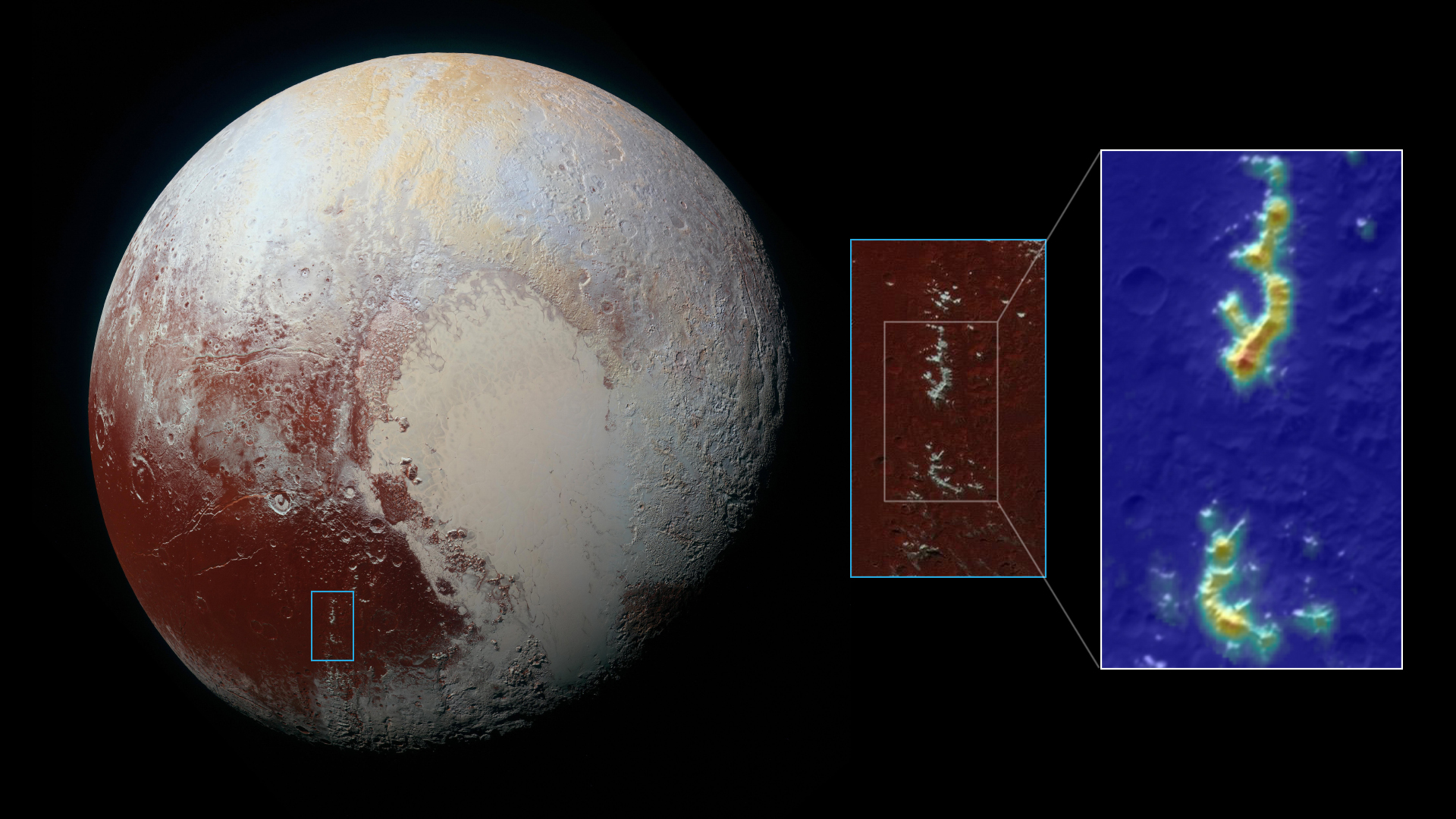
New research conducted by an international team of scientists, including researchers at NASA’s Ames Research Center in California’s Silicon Valley, analyzed New Horizons data from Pluto’s atmosphere and surface, using numerical simulations of Pluto’s climate to reveal that these ice caps are created through an entirely different process than they are on Earth.
“It is particularly remarkable to see that two very similar landscapes on Earth and Pluto can be created by two very dissimilar processes,” said Tanguy Bertrand, a postdoctoral researcher at Ames and lead author on the paper detailing these results, which was published in Nature Communications. “Though theoretically objects like Neptune’s moon Triton could have a similar process, nowhere else in our solar system has ice-capped mountains like this besides Earth.”
On our planet, atmospheric temperatures decrease with altitude, mostly because of the cooling induced by the expansion of the air in upward motions. The cool atmosphere in turn cools temperatures at the surface. When a moist wind approaches a mountain on Earth, its water vapor cools and condenses, forming clouds and then the snow seen on mountain tops. But on Pluto, the opposite occurs. The dwarf planet’s atmosphere actually gets warmer as altitude increases because the methane gas that’s more concentrated higher up absorbs solar radiation. However, the atmosphere is too thin to impact the surface temperatures, which remain constant. And unlike Earth’s upward winds, on Pluto, winds that travel down mountain slopes dominate.
To understand how the same landscape could be produced with different materials and under different conditions, the researchers developed a 3D model of Pluto’s climate at the Laboratoire de Météorologie in Paris, France, simulating the atmosphere and surface over time. They found that Pluto’s atmosphere has more gaseous methane at its warmer, higher altitudes, allowing for that gas to saturate, condense, and then freeze directly on the mountain peaks without any clouds forming. At lower altitudes, there’s no methane frost because there’s less of this gaseous methane, making it impossible for condensation to occur.
This process not only creates the methane ice caps on Pluto’s mountains, but also similar features on its crater rims as well. The mysterious bladed terrain that can be found in the Tartarus Dorsa region around Pluto’s equator is also explained by this cycle.
“Pluto really is one of the best natural laboratories we have to explore the physical and dynamic processes involved when compounds that regularly transition between solid and gas states interact with a planetary surface,” said Bertrand. “The New Horizons flyby revealed astonishing glacial landscapes we continue to learn from.”
About Half of Sun-Like Stars Could Host Rocky, Potentially Habitable Planets
by Frank Tavares
Since astronomers confirmed the presence of planets beyond our solar system, called exoplanets, humanity has wondered how many could harbor life. Now, we’re one step closer to finding an answer. According to new research using data from NASA’s retired planet-hunting mission, the Kepler space telescope, about half the stars similar in temperature to our Sun could have a rocky planet capable of supporting liquid water on its surface.
Our galaxy holds an estimated 300 million of these potentially habitable worlds, based on results in a study released today and to be published in The Astronomical Journal. Some of these exoplanets could even be our interstellar neighbors, with four potentially within 30 light-years of our Sun and the closest likely to be about 20 light-years from us.
This research helps us understand the potential for these planets to have the elements to support life. This is an essential part of astrobiology, the study of life’s origins and future in our universe.
The study is authored by NASA scientists who worked on the Kepler mission alongside collaborators from around the world. NASA retired the space telescope in 2018 after it ran out of fuel. Nine years of the telescope’s observations revealed that there are billions of planets in our galaxy – more planets than stars.
“Kepler already told us there were billions of planets, but now we know a good chunk of those planets might be rocky and habitable,” said the lead author Steve Bryson, a researcher at NASA’s Ames Research Center in California’s Silicon Valley. “Though this result is far from a final value, and water on a planet’s surface is only one of many factors to support life, it’s extremely exciting that we calculated these worlds are this common with such high confidence and precision.”
For the purposes of calculating this occurrence rate, the team looked at exoplanets between a radius of 0.5 and 1.5 times that of Earth’s, narrowing in on planets that are most likely rocky. They also focused on stars similar to our Sun in age and temperature, plus or minus up to 1,500 degrees Fahrenheit.
That’s a wide range of different stars, each with its own particular properties impacting whether the rocky planets in its orbit are capable of supporting liquid water. These complexities are partly why it is so difficult to calculate how many potentially habitable planets are out there, especially when even our most powerful telescopes can just barely detect these small planets. That’s why the research team took a new approach.
Rethinking How to Identify Habitability
This new finding is a significant step forward in Kepler’s original mission to understand how many potentially habitable worlds exist in our galaxy. Previous estimates of the frequency, also known as the occurrence rate, of such planets ignored the relationship between the star’s temperature and the kinds of light given off by the star and absorbed by the planet.
The new analysis accounts for these relationships, and provides a more complete understanding of whether or not a given planet might be capable of supporting liquid water, and potentially life. That approach is made possible by combining Kepler’s final dataset of planetary signals with data about each star’s energy output from an extensive trove of data from the European Space Agency’s Gaia mission.
“We always knew defining habitability simply in terms of a planet’s physical distance from a star, so that it’s not too hot or cold, left us making a lot of assumptions,” said Ravi Kopparapu, an author on the paper and a scientist at NASA’s Goddard Space Flight Center in Greenbelt, Maryland. “Gaia’s data on stars allowed us to look at these planets and their stars in an entirely new way.”
Gaia provided information about the amount of energy that falls on a planet from its host star based on a star’s flux, or the total amount of energy that is emitted in a certain area over a certain time. This allowed the researchers to approach their analysis in a way that acknowledged the diversity of the stars and solar systems in our galaxy.
“Not every star is alike,” said Kopparapu. “And neither is every planet.”
Though the exact effect is still being researched, a planet’s atmosphere figures into how much light is needed to allow liquid water on a planet’s surface as well. Using a conservative estimate of the atmosphere’s effect, the researchers estimated an occurrence rate of about 50% — that is, about half of Sun-like stars have rocky planets capable of hosting liquid water on their surfaces. An alternative optimistic definition of the habitable zone estimates about 75%.
Kepler’s Legacy Charts Future Research
This result builds upon a long legacy of work of analyzing Kepler data to obtain an occurrence rate and sets the stage for future exoplanet observations informed by how common we now expect these rocky, potentially habitable worlds to be. Future research will continue to refine the rate, informing the likelihood of finding these kinds of planets and feeding into plans for the next stages of exoplanet research, including future telescopes.
“Knowing how common different kinds of planets are is extremely valuable for the design of upcoming exoplanet-finding missions,” said co-author Michelle Kunimoto, who worked on this paper after finishing her doctorate on exoplanet occurrence rates at the University of British Columbia, and recently joined the Transiting Exoplanet Survey Satellite, or TESS, team at the Massachusetts Institute of Technology in Cambridge, Massachusetts. “Surveys aimed at small, potentially habitable planets around Sun-like stars will depend on results like these to maximize their chance of success.”
After revealing more than 2,800 confirmed planets outside our solar system, the data collected by the Kepler space telescope continues to yield important new discoveries about our place in the universe. Though Kepler’s field of view covered only 0.25% of the sky, the area that would be covered by your hand if you held it up at arm’s length towards the sky, its data has allowed scientists to extrapolate what the mission’s data means for the rest of the galaxy. That work continues with TESS, NASA’s current planet hunting telescope.
“To me, this result is an example of how much we’ve been able to discover just with that small glimpse beyond our solar system,” said Bryson. “What we see is that our galaxy is a fascinating one, with fascinating worlds, and some that may not be too different from our own.”
Massive Stars are Factories for Ingredients to Life
by Kassandra Bell
NASA’s telescope on an airplane, the Stratospheric Observatory for Infrared Astronomy, or SOFIA, has provided a new glimpse of the chemistry in the inner region surrounding massive young stars where future planets could begin to form. It found massive quantities of water and organic molecules in these swirling, disk-shaped clouds, offering new insights into how some of the key ingredients of life get incorporated into planets during the earliest stages of formation.
A similar process likely happened during the formation of the Sun and the inner rocky planets of our solar system, including Earth. The results are published in the Astrophysical Journal.

“We’re seeing many more molecular signatures than were ever seen before at these wavelengths,” said Andrew Barr, the lead author of the study and a doctoral candidate at Leiden University in the Netherlands. “It turns out that these stars are like chemical factories churning out molecules important for life as we know it and we just needed the right kind of observations to see them.”
SOFIA’s infrared observations offer an unparalleled view of star chemistry. When visible light is spread into its component colors, a rainbow appears. When infrared light is broken into its components, it reveals a series of bright lines, called spectra. Each element creates a unique line, so the lines act as chemical fingerprints. Scientists use them to identify which substances are in and around stars. SOFIA’s instruments can detect small details in the chemical fingerprints from the cores of massive young stars, similar to how high-resolution images reveal tiny features. This information about massive stars, more than 40 times the mass of our Sun, can be a reference for NASA’s James Webb Space Telescope, which will study the formation of Sun-sized stars, among other types of targets.
“This study is very exciting as it demonstrates the power of infrared observatories to sense the presence of simple organic compounds that were important for the origin of life on Earth, and possibly other planets,” said Klaus Pontoppidan, project scientist for the Webb telescope at the Space Telescope Science Institute. “One of the most important goals of both Webb and SOFIA is to understand the origins of stars and planets — and ultimately ourselves.”
Stars form when celestial clouds collapse, feeding a rotating disc of gas and dust into a central core. SOFIA looked at this process happening around two massive stars, AFGL 2591 and AFGL 2136, each about 3,000 light years away in the constellation Cygnus and the Juggler Nebula respectively. The observatory found the inner regions of these discs are heated from the inside out, transforming the gas surrounding the core into an entirely different composition. Within the same areas of the disc where planets would form were a chemical soup of organic molecules, including water, ammonia, methane, and acetylene — which is a chemical building block of larger and more complex organic molecules.
Further studies of other massive young stars by SOFIA will deepen our understanding of the processes creating organic molecules. As SOFIA’s observations indicate that massive star formation is a scaled-up version of what is occurring in smaller, Sun-sized stars, these new studies can be of benefit to Webb. While Webb’s extremely sensitive telescope will be able to detect some of the weakest signals from molecules present around Sun-like stars, SOFIA can unambiguously identify the chemical compositions of molecules glowing brightly around more massive stars. This will help scientists using Webb interpret the weaker signals.
SOFIA is a Boeing 747SP jetliner modified to carry a 106-inch diameter telescope. It is a joint project of NASA and the German Aerospace Center, DLR. NASA’s Ames Research Center manages the SOFIA program, science, and mission operations in cooperation with the Universities Space Research Association headquartered in Columbia, Maryland, and the German SOFIA Institute (DSI) at the University of Stuttgart. The aircraft is maintained and operated from NASA’s Armstrong Flight Research Center Hangar 703 in Palmdale, California.
SOFIA Departs for Scheduled Maintenance
by Kassandra Bell
The Stratospheric Observatory for Infrared Astronomy, or SOFIA, departed for scheduled maintenance at Lufthansa Technik’s facility, seen below, in Hamburg, Germany, on Sept. 29, 2020.
Lufthansa Technik’s 747SP specialists will perform scheduled inspections and maintenance in coordination with flight, aircraft and scientific personnel from NASA’s Armstrong Flight Research Center and Ames Research Center. Scheduled maintenance such as this is required for all aircraft, much like the regular servicing done on cars. Staff from the German SOFIA Institute (DSI) also will perform upgrades to the flying observatory’s telescope. The maintenance is expected to be completed early next year.
SOFIA is a Boeing 747SP jetliner modified to carry a 106-inch diameter telescope. It is a joint project of NASA and the German Aerospace Center, DLR. NASA Ames manages the SOFIA program’s science and mission operations in cooperation with the Universities Space Research Association headquartered in Columbia, Maryland, and the German SOFIA Institute (DSI) at the University of Stuttgart. The aircraft is maintained and operated from NASA’s Armstrong Flight Research Center Hangar 703.
Simulations Reveal How Planetary Impacts Affect Atmosphere
by Frank Tavares
The histories of planets across our solar system and beyond are filled with collisions and transformations. New research is helping scientists understand how colossal impacts, like the one with Earth thought to have formed the Moon, are impacting the atmospheres of rocky planets.
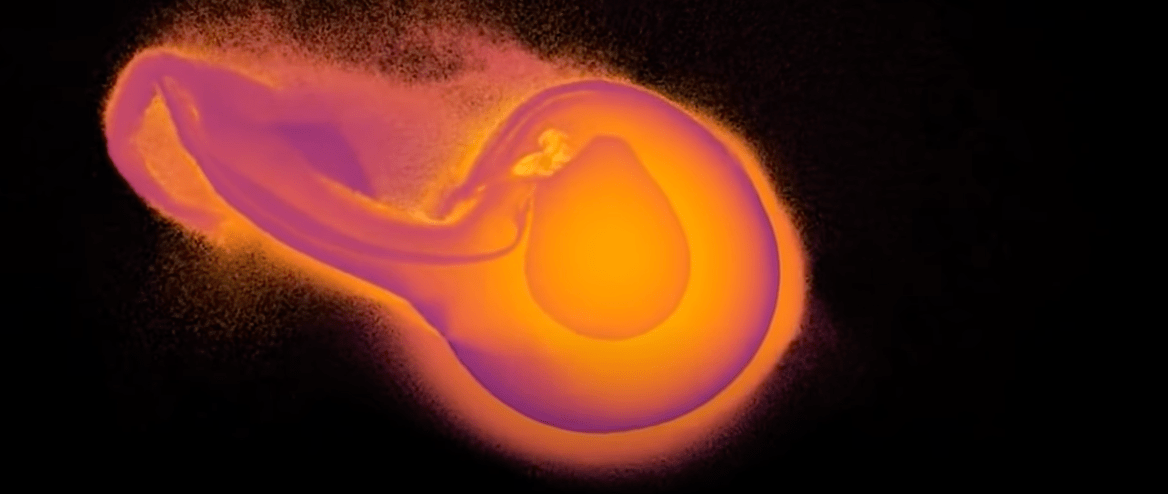
A cross-section of a 3D simulation replicating a scenario for the impact that formed the Moon, showing a roughly Mars-mass impactor grazing an Earth-like target at a 45-degree angle. The simulation uses over 100 million particles, colored by their internal energy, related to their temperature.Credits: Jacob Kegerreis/Durham University
In the animation above, a Mars-like mass grazes an Earth-like mass, replicating the traditional theory for the impact that formed the Moon. Some atmosphere is lost, accompanied by a shockwave. This is one of more than 300 simulations that scientists at Durham University in the United Kingdom, alongside researchers at NASA Ames ran to develop a way to predict how much atmosphere is lost from a wide range of collisions between rocky objects, presented in a new study.
Results from these simulations show that, depending on the scenario, 10% to 60% of Earth’s atmosphere could have been lost in the collision that created the Moon, helping scientists narrow down theories about its creation. By looking at a wide range of factors, such as size, speed, composition, and angles of the objects colliding, the researchers were able to explore a variety of scenarios, showing that collisions with young planets can even add atmosphere to a planet if the impactor has some to give.
This research was funded by NASA, the Science and Technology Facilities Council in the U.K., and The Royal Society in the U.K. Simulations were carried out using the COSmology MAchine, or COSMA, supercomputer, part of the Distributed Research utilising Advanced Computing, or DiRAC, High-Performance Computing facility based in Durham, U.K., using the SPH With Interdependent Fine-grained Tasking, or SWIFT, open-source simulation code.
In Memoriam . . .
Harry Gobler, A Man Who Made A Difference, 1938 – 2020
Harry Gobler passed away on Oct. 1. We are grateful for his contributions to Ames and will forever remember his legacy. Below is a beautiful tribute written by Michael Ospring remembering the life of this incredible man.
Harry came to Ames as an accomplished civil engineer in 1983 to work on the National Full-Scale Aerodynamic facility. Having previously been a designer at the city of Los Angeles, he had created bridges and other structures and subsequently developed an expertise in earthquake safety. Harry went on the work at Ecodyne, engineering new designs of concrete natural draft cooling towers. He proceeded on to do foundation designs for the National Full-Scale Aerodynamics Complex, or NFAC, facility while working at Sverdrup and Parcel & Associates.
When Harry arrived at Ames, he was immediately cast into the role of engineering lead for the NFAC design that included the new 80-by-120-foot wind tunnel. After successfully leading the NFAC through the integrated system testing, he moved on to become the deputy project manager for the 12-foot modernization project. This project was particularly tight on funding and Harry guided it through a major bid bust that resulted in a successful redesign using in-house resources.
Harry then moved immediately onto the Unitary Modernization project as deputy project manager, where his depth of experience and technical expertise were tested to the limit on critical contracts that included the main drive motor rewind and the new 11-foot test section flexible walls.
Ultimately, Harry finished out his career on the Stratospheric Observatory for Infrared Astronomy, or SOFIA, aircraft, directing the cavity door team to a successful design and fabrication of the assemblies that both expose and protect the telescope.
Harry received multiple awards during his career at NASA, including a Presidential Rank Award – Outstanding Leadership Medal. The award that he was most proud of was the Ames Honor Award for Excellence as a Mentor. Harry personally mentored multiple individuals who went on to have distinguished careers at NASA.
Harry ultimately left Ames in 2004 and became a volunteer docent at the Railroad Museum in Sacramento, eventually designing the new wheelhouse turntable that stands to this day. Everyone who has ever worked for or alongside Harry will testify to his integrity, honesty, humility, and willingness to elevate everyone around him.
Oh yes, one more thing. He could really play baseball.
Godspeed Harry.

